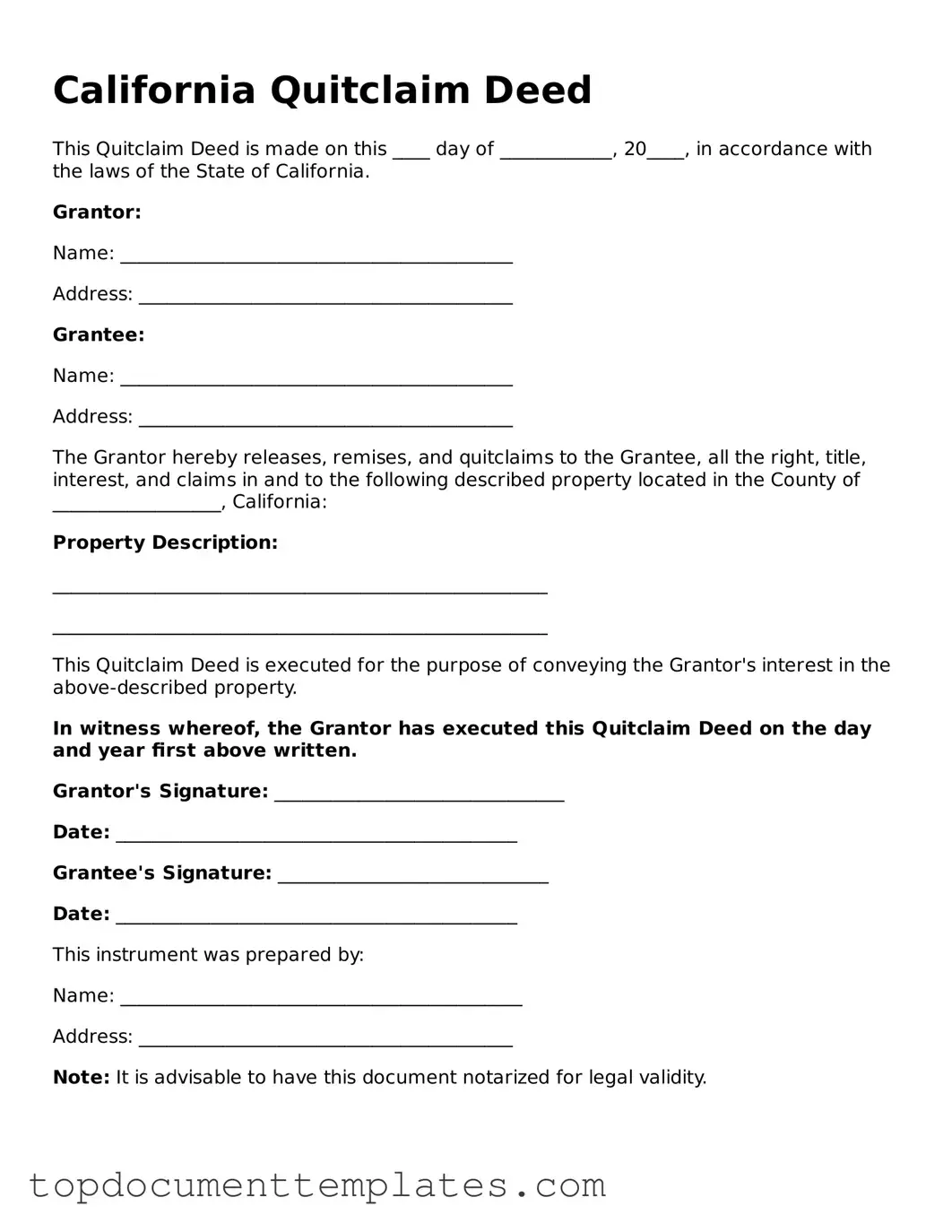The California Quitclaim Deed form is a vital legal document that facilitates the transfer of property ownership without guaranteeing the title's validity. This type of deed is often used in situations where the granter wishes to convey their interest in a property to another party without making any promises about the property's condition or any existing liens. It serves as a straightforward method for transferring property rights, whether among family members, in divorce settlements, or during estate planning. The form requires specific information, including the names of the granter and grantee, a description of the property, and the date of the transfer. Importantly, the Quitclaim Deed must be signed by the granter and notarized to be legally effective. Once recorded with the county recorder's office, the transfer becomes part of the public record, ensuring transparency in property ownership. Understanding the nuances of this form is essential for anyone looking to navigate property transactions in California, as it can significantly impact both parties involved.
